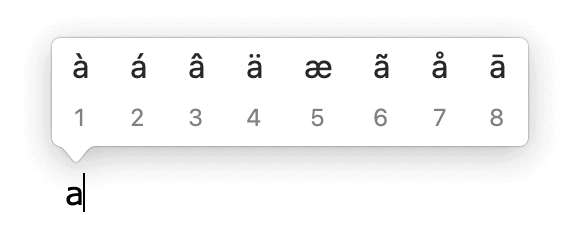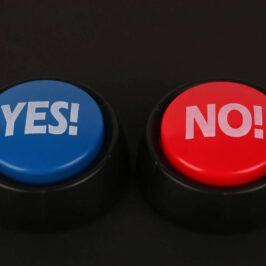
When writing a French word in English text, should you include the original accents? Cafe or café? Chateau or château? Facade or façade?
As an editor specialising in books set in France, I come up against this question fairly often.
If you’re following a particular style guide, such as The Chicago Manual of Style (CMOS) or the Oxford style guide (New Hart’s Rules), you may find your answer in their respective companion dictionaries. However, if you aren’t following a prescriptive style guide or if the particular word you’re using isn’t in the guide or dictionary you follow, there are some rules of thumb you can use.
Above all, be consistent. Once you’ve made a decision about a particular word, stick to it for any other instances.
Terminology
The correct term for the marks above or below French words to show pronunciation is ‘diacritics’ or ‘diacritical marks’. However, they are more commonly known as ‘accent marks’, and even more commonly known as ‘accents’.
In French, the accent marks above certain letters are:
- acute – used over ‘e’ (é) to show a change in pronunciation to a sound similar to ‘ay’ in English, although more closed/clipped (e.g. fermé)
- grave – used over ‘a’, ‘e’ and ‘u’ (è, à, ù) to show a more open sound (e.g. frère)
- circumflex – used over any of the five vowels (â, ê, î, ô, û), often to show ‘s’ has been dropped from the words over the centuries (e.g. hôpital)
- trema – used over ‘e’, ‘i’ and ‘u’ (ë, ï, ü) to show the accented vowel should be pronounced distinctly from the vowel before (e.g. Zoë)
- cedilla – used below ‘c’ (ç) before ‘a’ or ‘o’ to show it should be pronounced ‘s’ (e.g. garçon).
Proper nouns
When writing names of people, streets etc, retain the original accent or diacritic. It is an integral part of the name and should be respected. For example:
- Agnès
- Chloé
- Gaël
- Avenue des Champs Élysées
- Île-de-France
If you are referencing a work by an author from a French-speaking country or are writing about a real person, triple-check you have spelt their name correctly, including any diacritical marks.
Towns and cities in French-speaking countries
If an accented town or city has an English equivalent that doesn’t feature the accent, feel free to leave it off (I can’t think of any examples of this, though. Comment if you can!). Otherwise, retain it.
For example:
- Béziers
- Fougères
- Nîmes
- Périgueux
- Saint-Lô
NB. Some airlines include the accent for French towns and cities, others don’t (I’m looking at you, Ryanair and Easyjet, among others!).
Company names
If you’re writing about a French business whose name has an accent, leave it in.
As an aside, non-French businesses that have adopted a French word for their company name may or may not retain the accent, depending on either personal choice, which style guide they follow or ignorance. For example, Café Rouge (founded in 1989 in London) retains the acute accent, but Hard Rock Cafe (founded in 1971, also in London) doesn’t.
If you’re including a French company name in your work, check the company’s website for the correct way of writing it, including whether it sports a diacritical mark.
Accented French words embedded into English
For some style guides, accented French words that are firmly embedded into the English language no longer carry the diacritic.
For example, if you’re using the Oxford style guide (New Hart’s Rules), you don’t need to include an accent in French words that are well embedded into the English language (e.g. cafe, hotel). CMOS is keen to retain the accent on ‘café’, but drops the circumflex on ‘hotel’:
- Hart’s Rules – cafe, hotel, but café au lait, hôtel de ville (note the italics)
- CMOS – café (less commonly cafe), hotel, café au lait, hôtel de Ville
Incidentally, most French words that are embedded into English are not italicised, but check your style guide and its companion dictionary for guidance.
Accented French words not embedded into English
Accents on French words that are not firmly embedded into the English language should be retained.
Some of these words will be in the companion dictionary for your style guide (e.g. Merriam-Webster’s Collegiate Dictionary for CMOS). If the word is not listed, retain the accent.
Depending on the style guide you’re following, you may need to italicise any French words not embedded into English.
Non-exhaustive list of accented French words according to CMOS and Oxford
I’ve listed below some French words, commonly used in English, that are accented in the original French. I’ve cited how they appear in Merriam-Webster’s Collegiate Dictionary (for CMOS) and in the New Oxford Dictionary for Writers & Editors (Oxford style guide/New Hart’s Rules).
Feel free to make suggestions for additions in the comments!
The Chicago Manual of Style (CMOS)
- aperitif
- attaché
- café (less commonly, cafe)
- café au lait
- château
- cliché (less commonly cliche)
- crèche
- déjà vu
- denouement (less commonly dénouement)
- elite
- facade (less commonly façade)
- fiancé (man)
- fiancée (woman)
- hotel
- hôtel de ville
- naive (or naïve)
- papier-mâché (note hyphen)
- pâté (less commonly pate)
- patisserie (or pâtisserie)
- plié
- risqué
- soufflé
- touché
- toupee (from French ‘toupet’ so no accent mark)
New Hart’s Rules
- aperitif
- attaché
- cafe
- café au lait (italics)
- chateau
- cliché
- crèche
- déjà vu
- denouement
- elite
- facade
- fiancé (man)
- fiancée (woman)
- hotel
- hôtel de ville (italics)
- naive (also naïve)
- papier mâché
- pâté
- patisserie
- plié
- risqué
- soufflé
- touché
- toupee (from French ‘toupet’ so no accent mark)
How to type diacritics and accents
While we’re talking about accents and diacritical marks, it’s probably worth covering how to get them into your document when you aren’t using a French keyboard.
Mac: Apple have made it very easy to insert accented characters into your work. Hold down (long press) the relevant letter key (e.g. ‘a’) and a small window will pop up, giving you all the possible diacritics for that letter. Tap the respective number on your keyboard (e.g. 2 for an acute accent) and, hey presto, an accented ‘a’ will appear in your document.)

Windows: Typing accented letters isn’t as easy for Windows users, but there are a few different methods, including shortcut keys and using the Windows Character Map. This article on wikiHow explains these methods, with pictures.
Accented French words in summary
There isn’t a fixed rule for accented French words used in English, but here’s my rule of thumb. Check the dictionary for the style guide you’re following. If the word appears in there, follow how the word is written. If the accented French word is not in there, retain the accent.
Are you writing or editing a book set in France, or do you regularly use French words when writing in English? Comment below on your experiences and thoughts about diacritical marks!









Anne
I learned in French lessons at school, many decades ago, that accents are not used on capital letters. As you did not mention this, I wonder whether this rule has changed.
Debbie Emmitt
Hi Anne, this is a really good point, and I’ll be adding a note about it to the blog post after your query, so thanks for raising it! After a bit of digging, I’ve found the definitive answer. Strictly speaking, accents should be added to capital letters in typed French. However, they are rarely added to capital letters in written French, and in the past, were left out of printed French due to line-height restrictions (which is no longer an issue with modern-day printing techniques). My source: https://frenchplanations.com/capital-letters-french/
John
If I am writing words, when should I use them, when it’s not about a specific thing like Jobs, I’m just having trouble knowing when to use it exactly when learning French.
Debbie Emmitt
Hi John, I’m not entirely sure what you need to know. I wonder if you could rephrase the question? Are you asking when you should use a French word, as opposed to an English one, when writing fiction set in France? And are you referring to dialogue or the narrative prose? Thanks for clarifying!